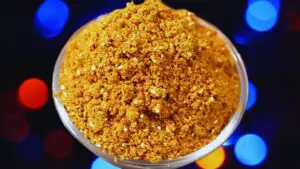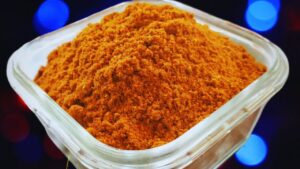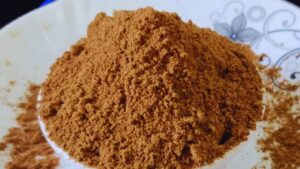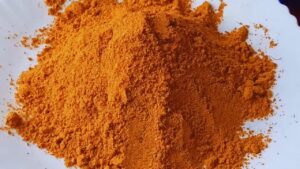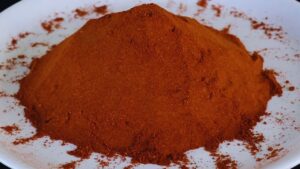Poha Masala Powder refers to a unique spice blend comprising different seeds, garam masala along with mace and nutmeg, all roasted and ground to perfection.
Go through my recipe guide to make homemade poha masala powder.
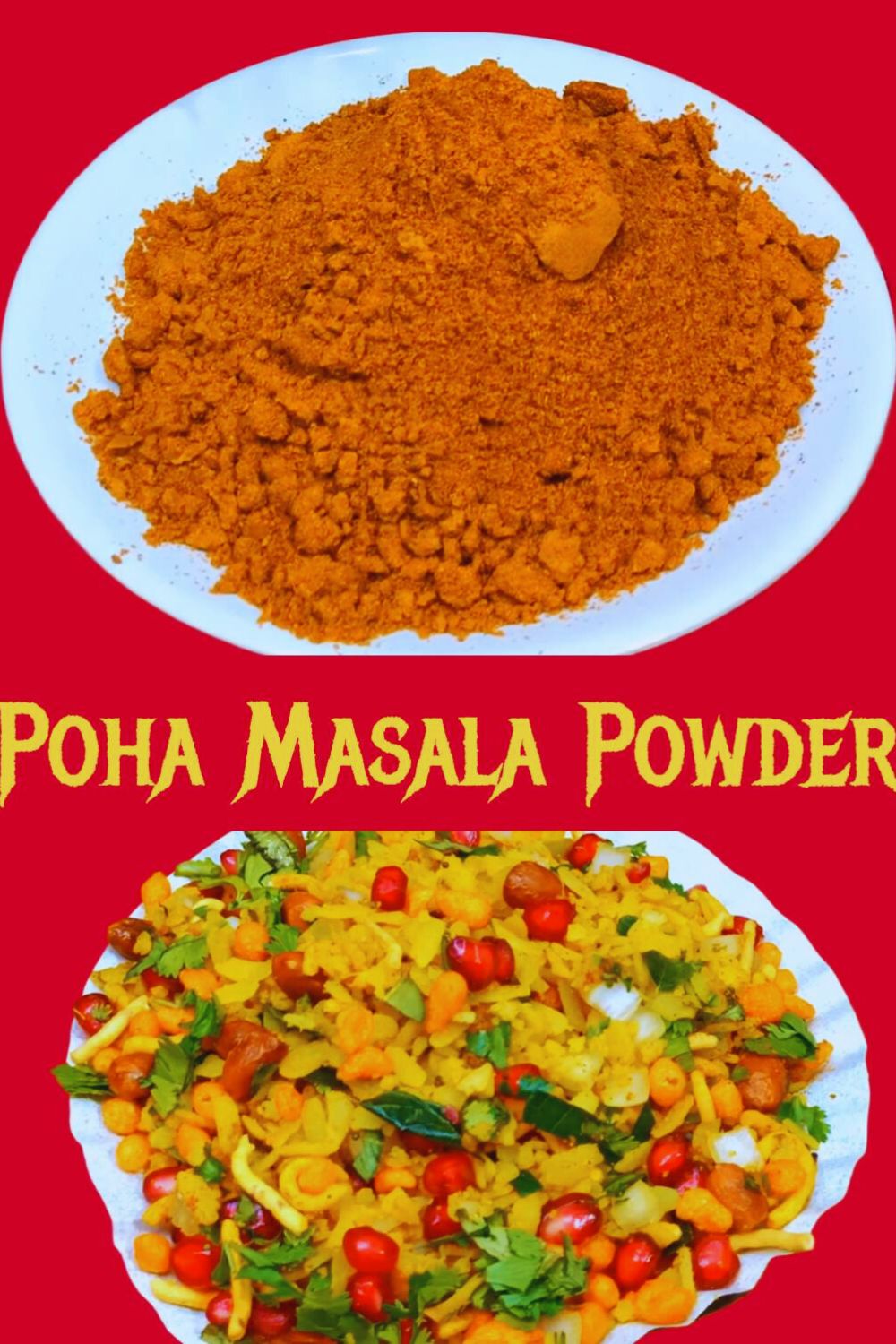
KEY TAKEAWAYS
- The authentic burst of flavor in the poha masala powder needs meticulous preparation.
- Store the powder in a cool and dark place in an airtight container.
- The powder is versatile and can be used in various breakfast dishes, snack items and curries over and above traditional poha. It includes vegetable pulao, khichdi, upma, different gravies, chaat varieties, stir-fried vegetables, and raita.
- Different powders such as classic Garam Masala Powder, Chaat Masala Powder, Pav Bhaji Masala Powder, Pickle Masala Powder and even simple Cumin Powder and Coriander Powder offer somewhat similar taste as poha masala powder.
How to Make Poha Masala Powder? (Step by Step Guide with Images)
Step 1: Heat a frying pan on a low flame on your gas stove.
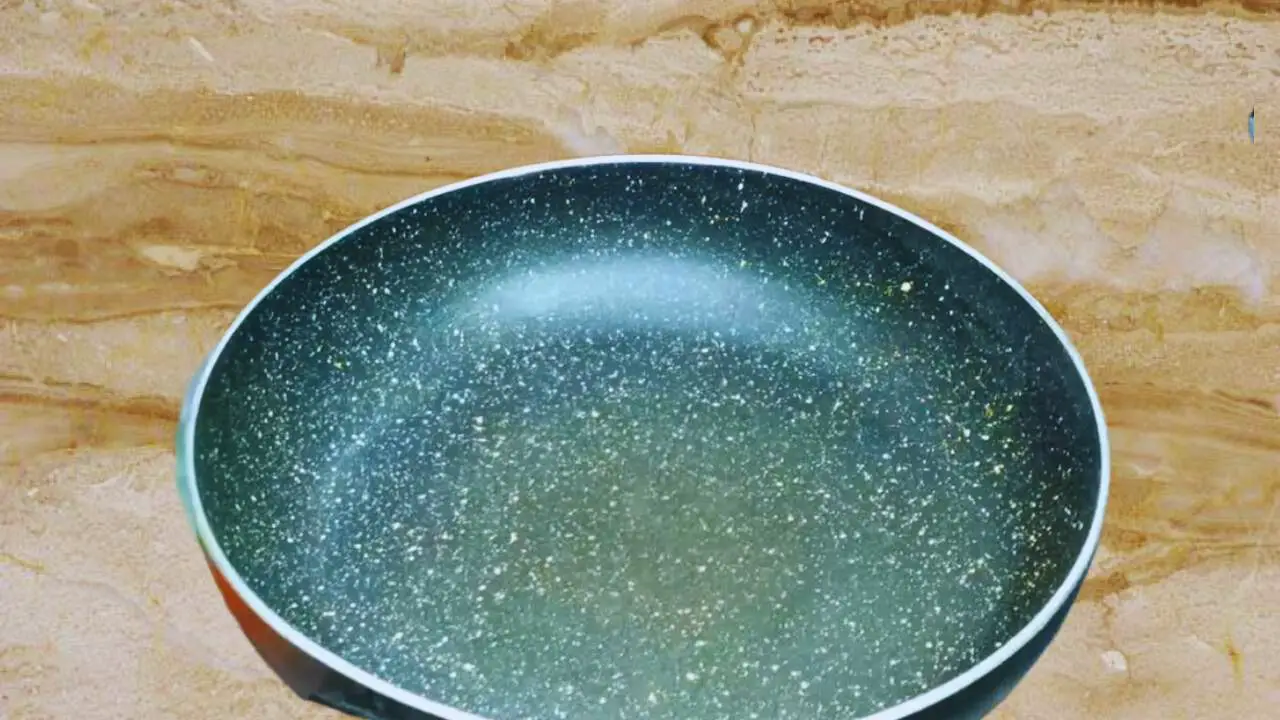
Step 2: Put 2 tbsp of fresh cumin seeds first in it.

Step 3: Along with it, add 2 tbsp of whole coriander seeds.
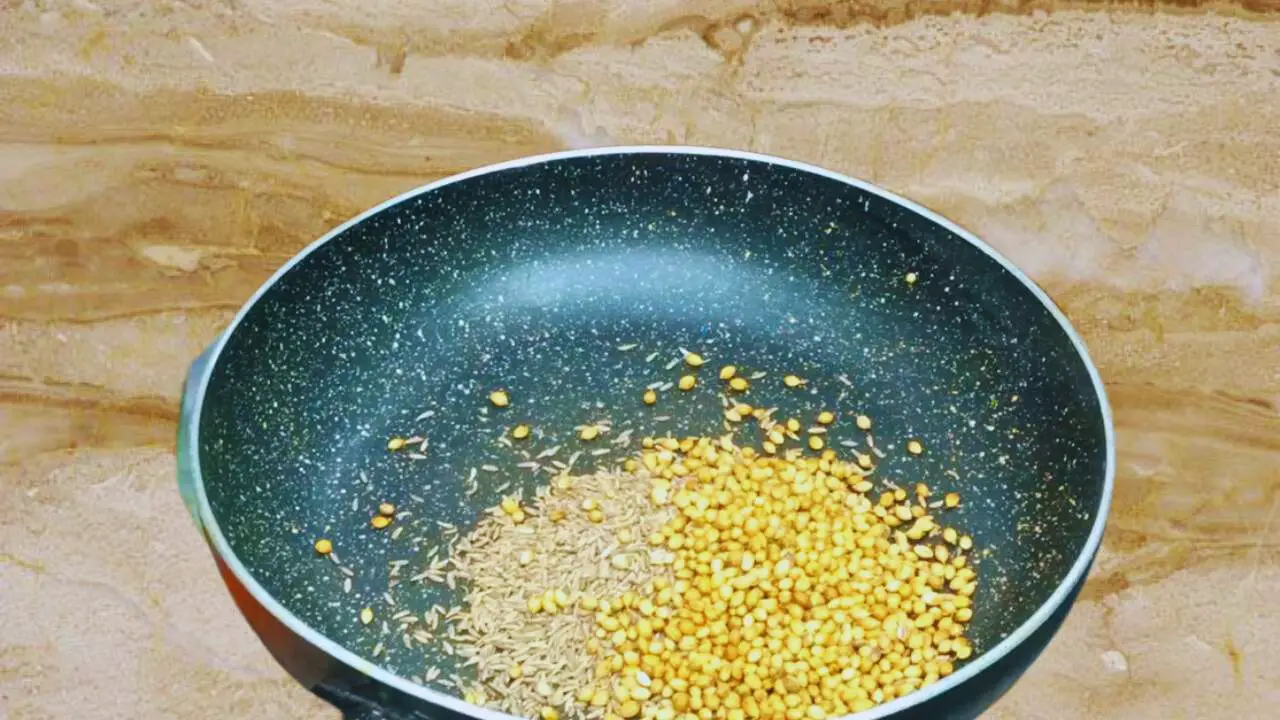
Step 4: Now, add 2 tbsp of fresh fennel seeds.
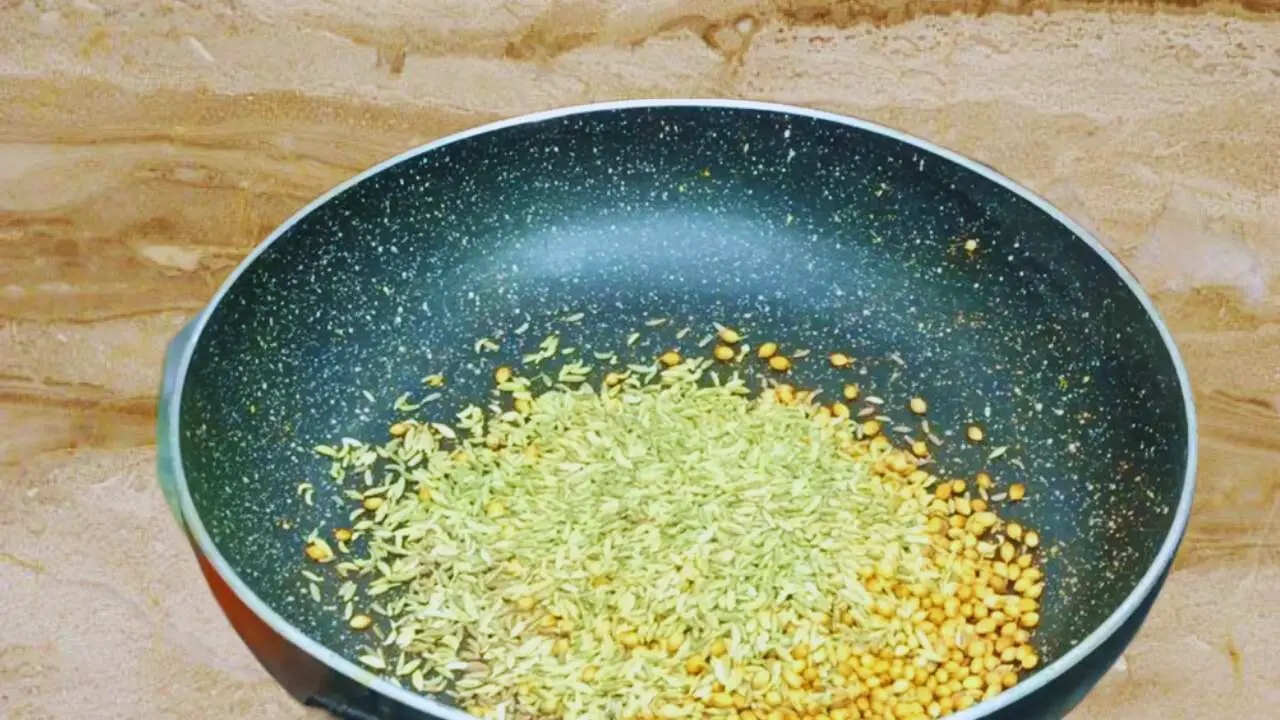
Step 5: Then, add 2 sticks of cinnamon of about 1-inch in size. You may break them into small pieces, though I have not.
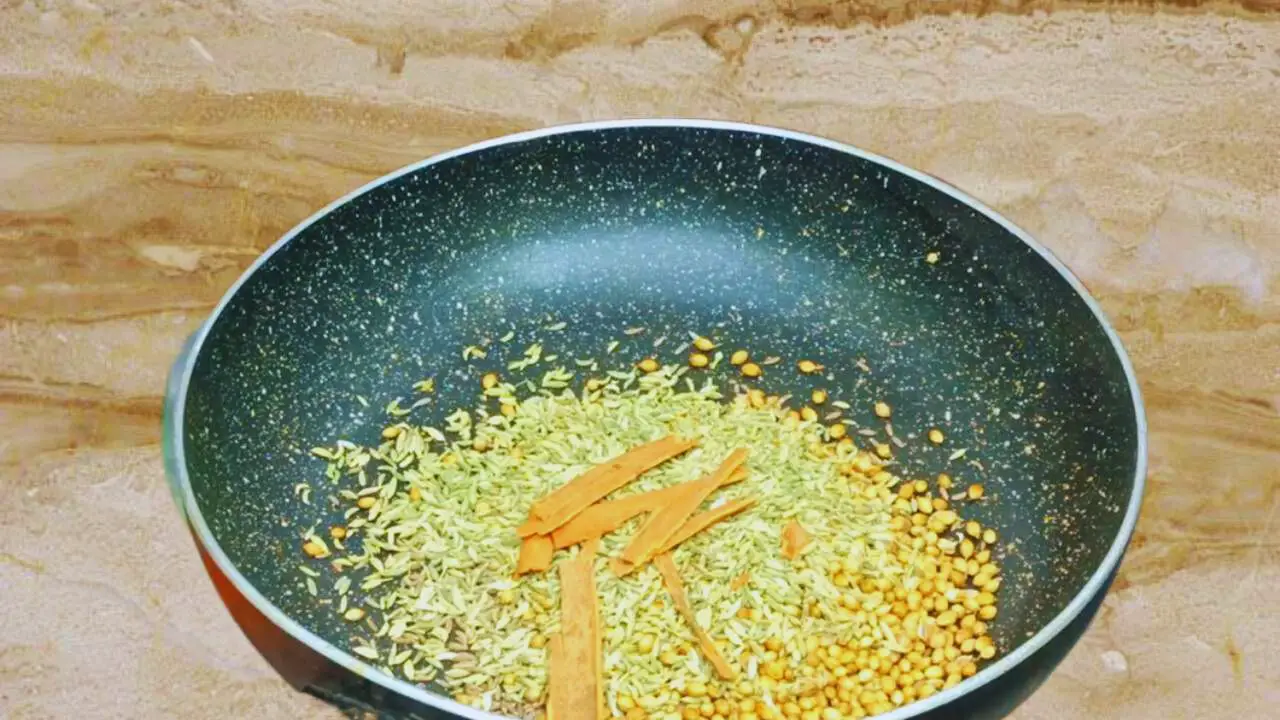
Step 6: Stir the spices continuously to dry roast them on a low flame.
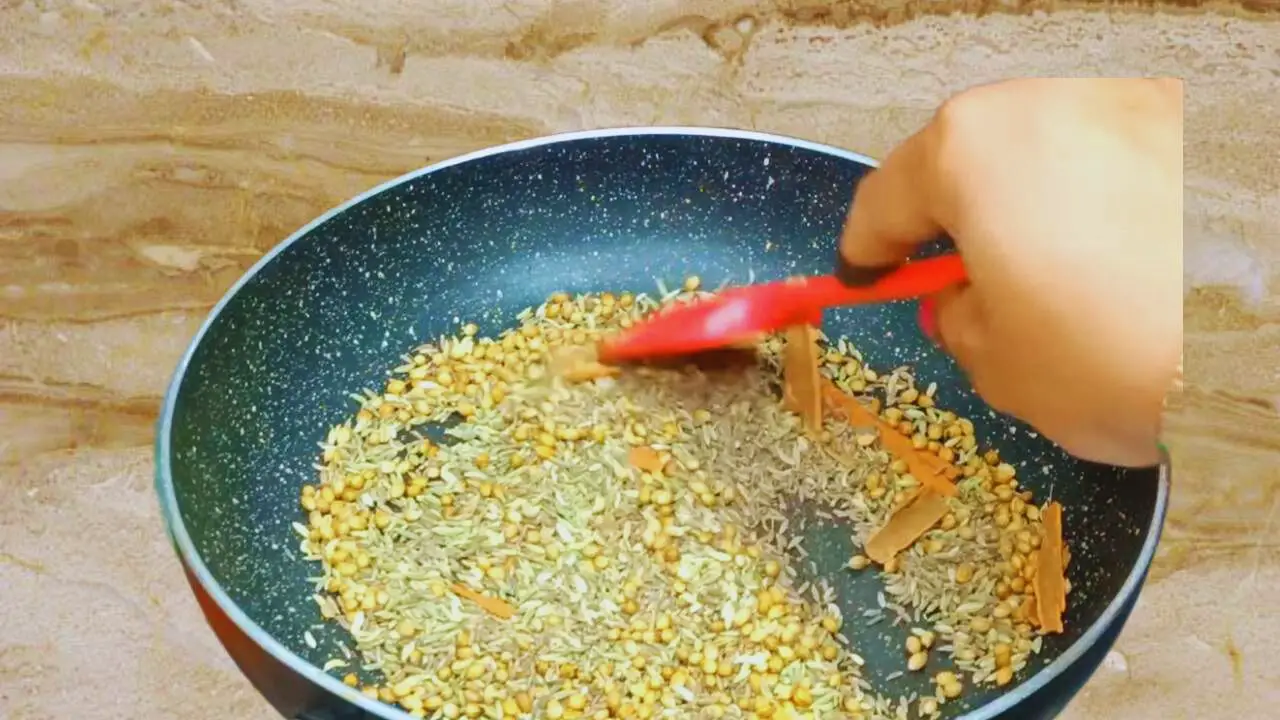
Step 7: Check the color of the spices. When it turns slightly golden brown, stop stirring.
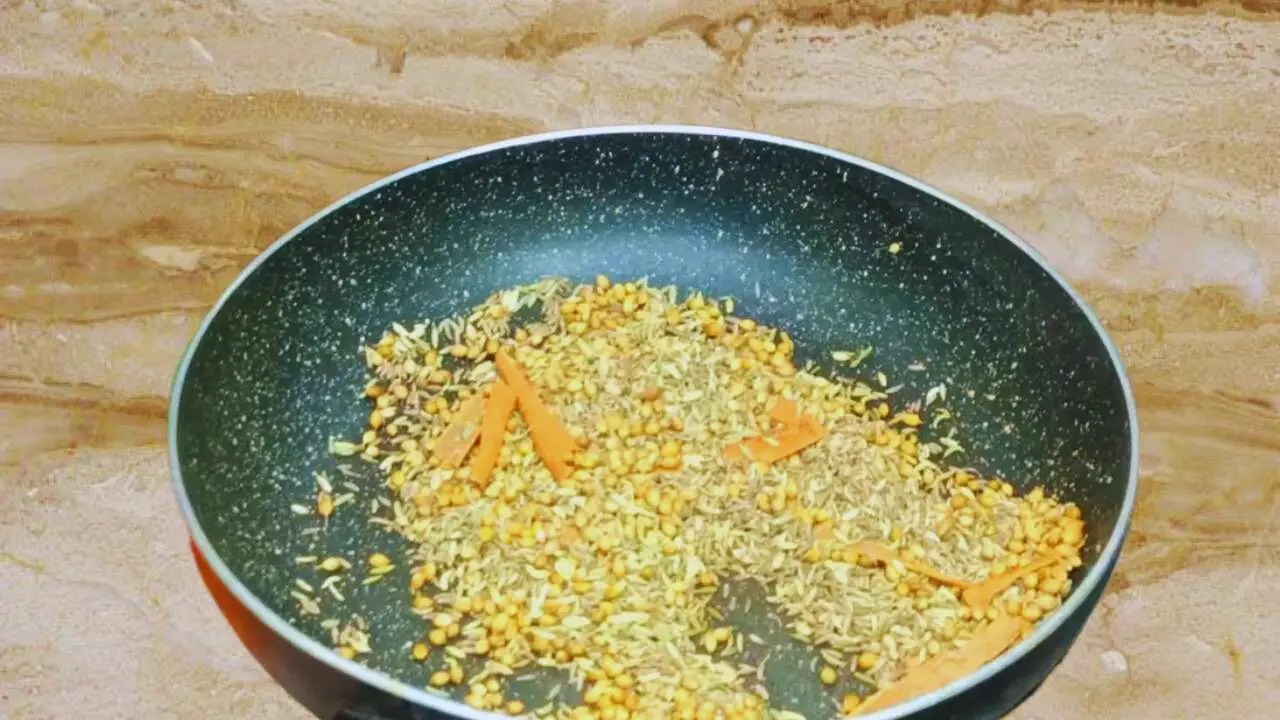
(Pro tip: Do not roast them much as that will affect the flavor. Just make sure that there is no moisture in them to enhance their shelf life).
Step 8: Now add about 15 pieces of cloves to the ingredients in the frying pan.
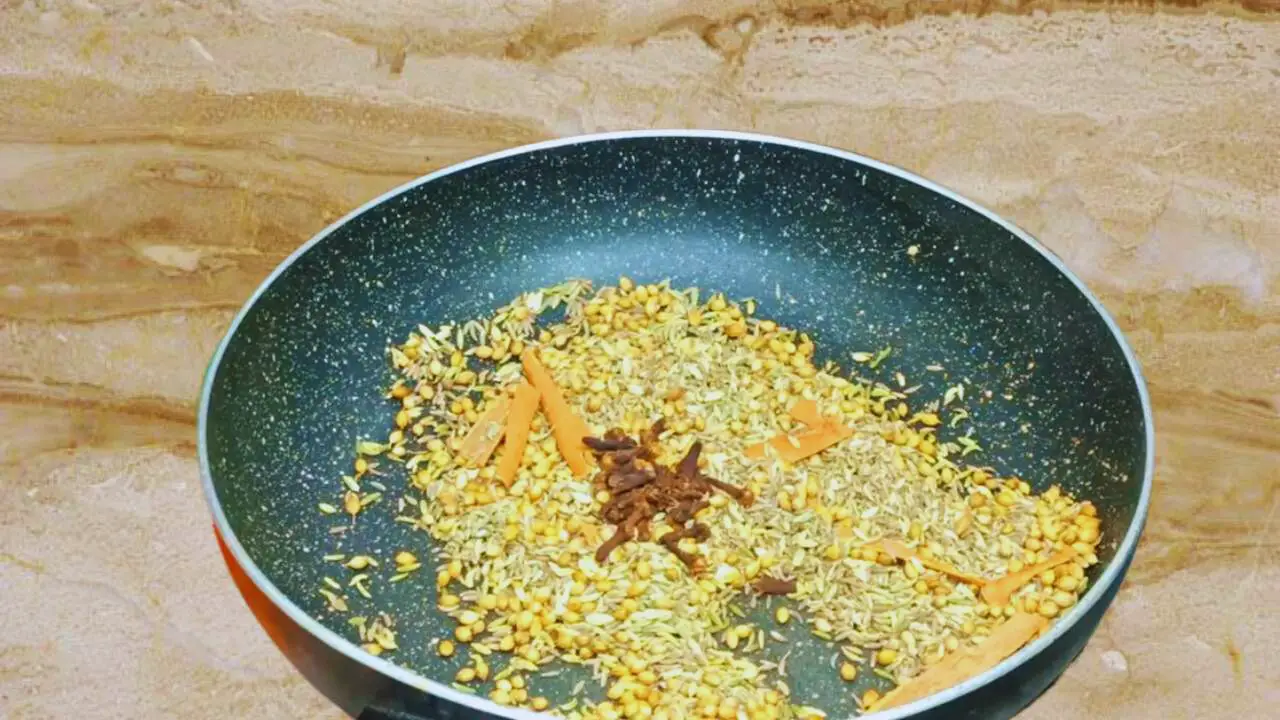
Step 9: Follow it with ½ tbsp of black pepper.
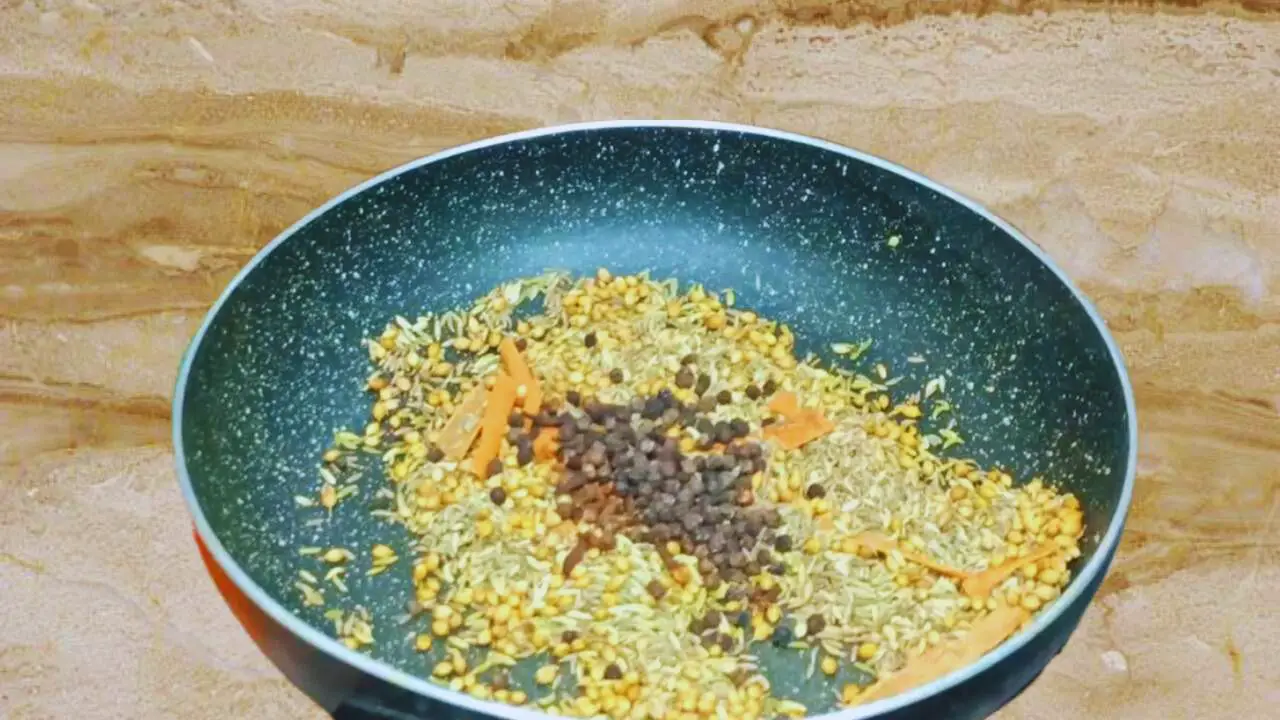
Step 10: Now add 1 piece of black cardamom to the spices in the pan.
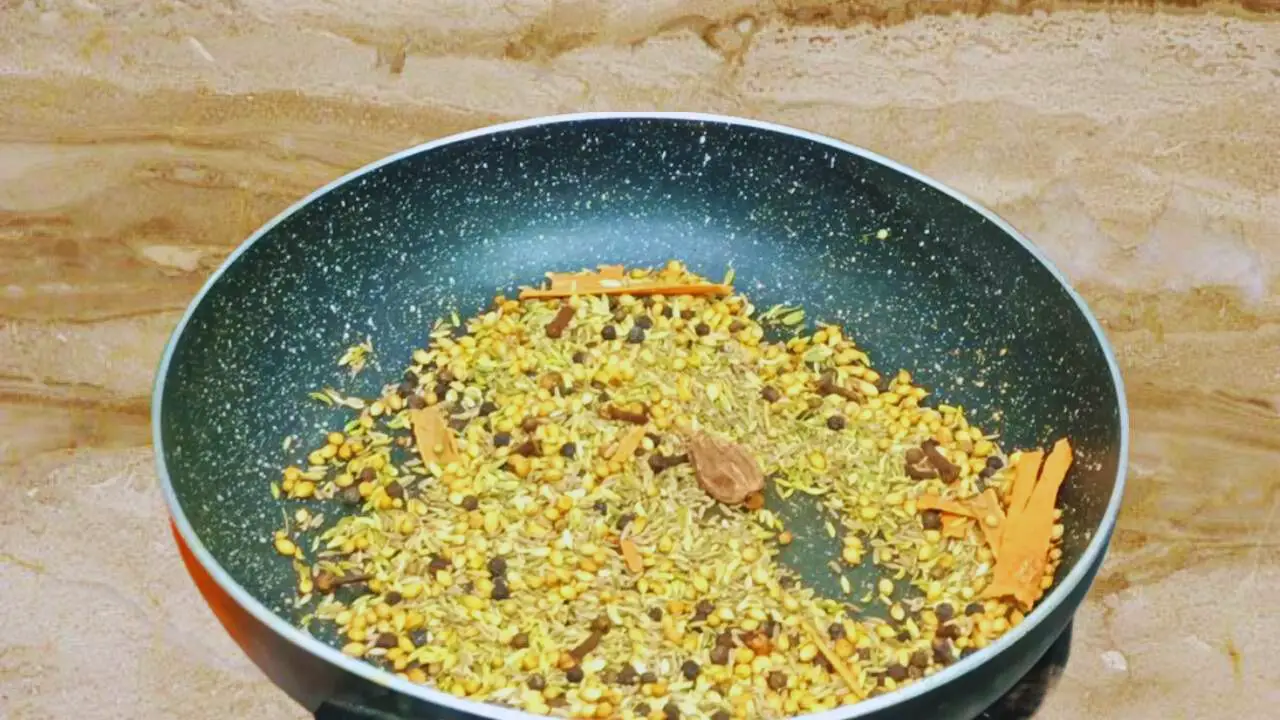
Step 11: Then add 5 pieces of green cardamom.
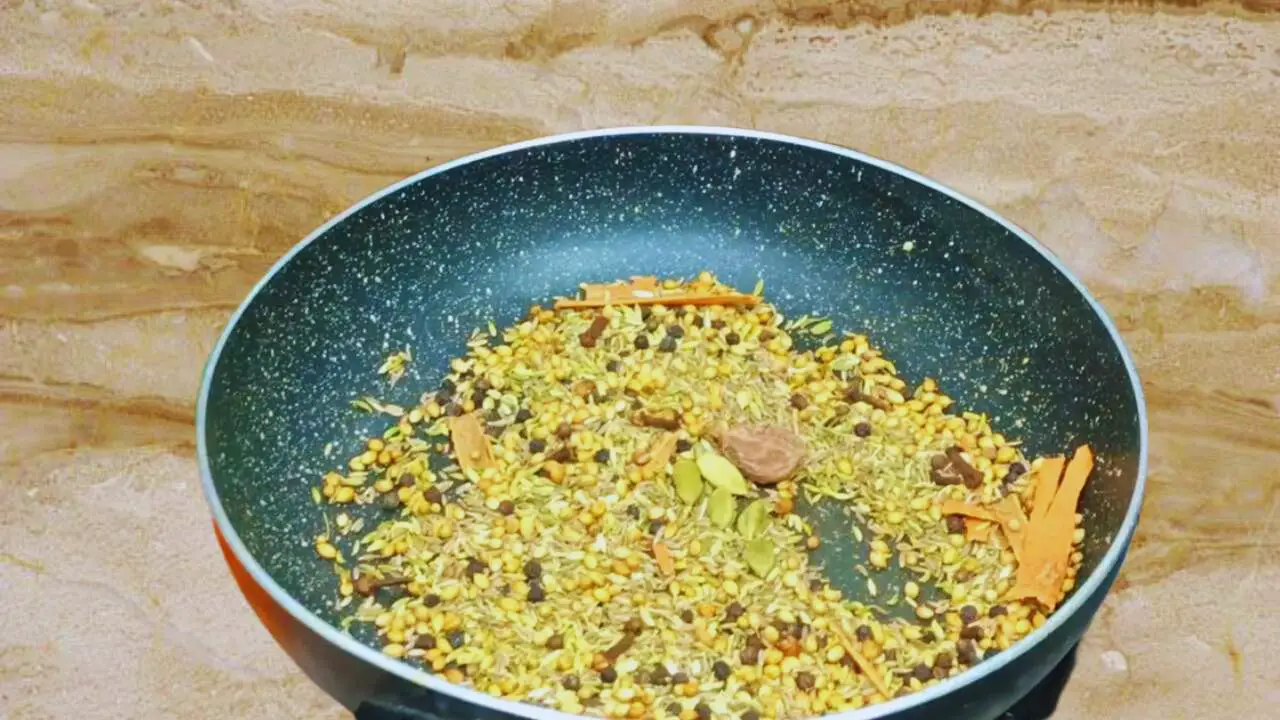
Step 12: Follow it with 4 medium pieces of bay leaves. You may tear them in half.
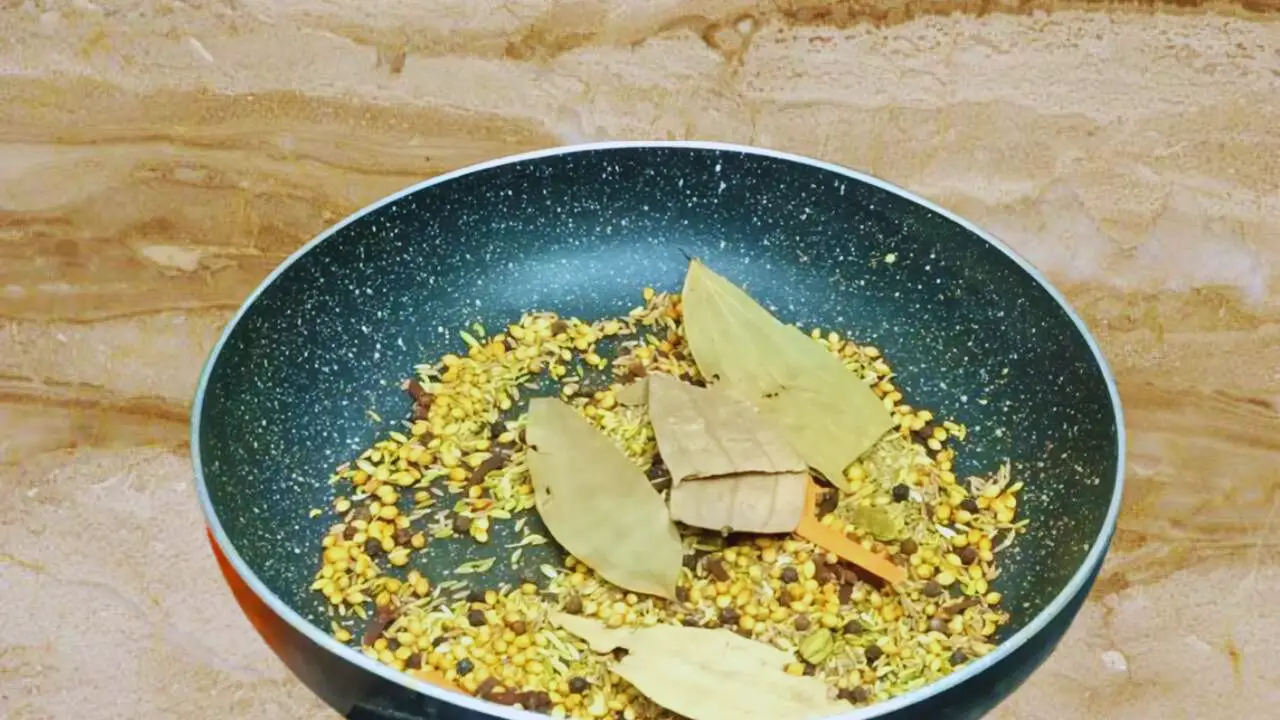
Step 13: Then add 2 pieces of mace.
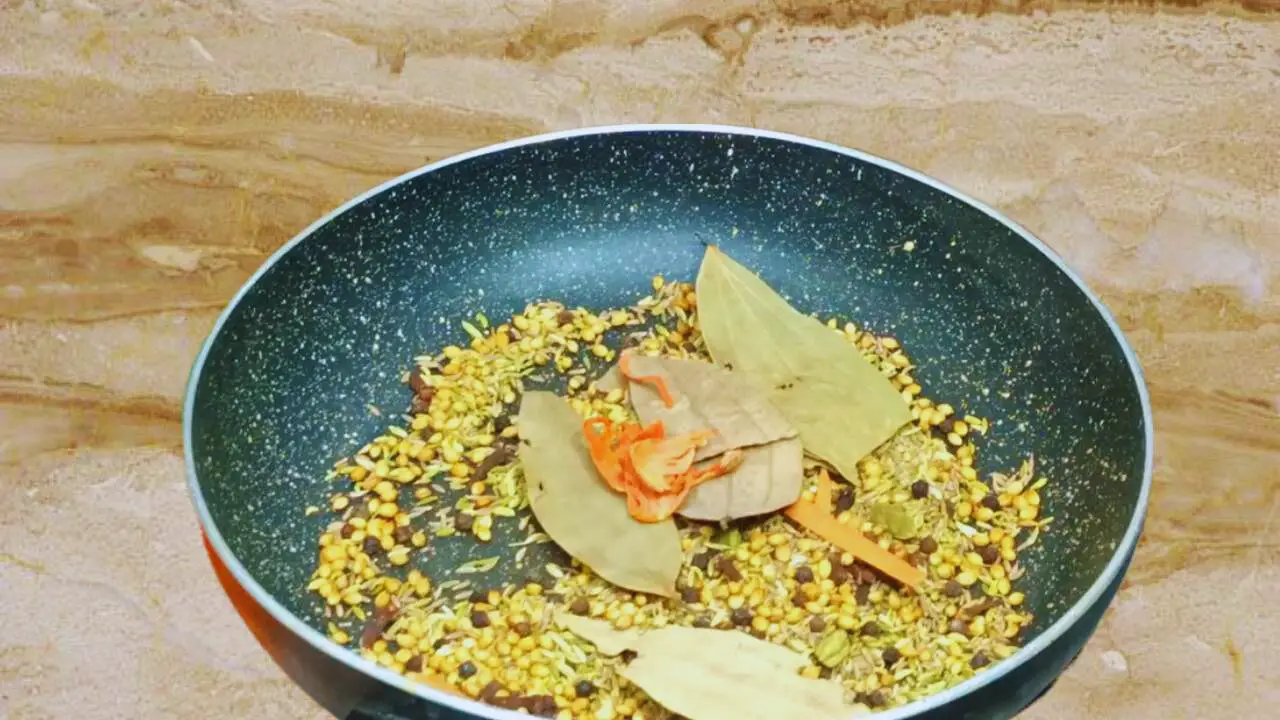
Step 14: Now, stir the contents continuously for about a couple of minutes until they are roasted nicely and you smell the aroma of roasted spices. Check the color.
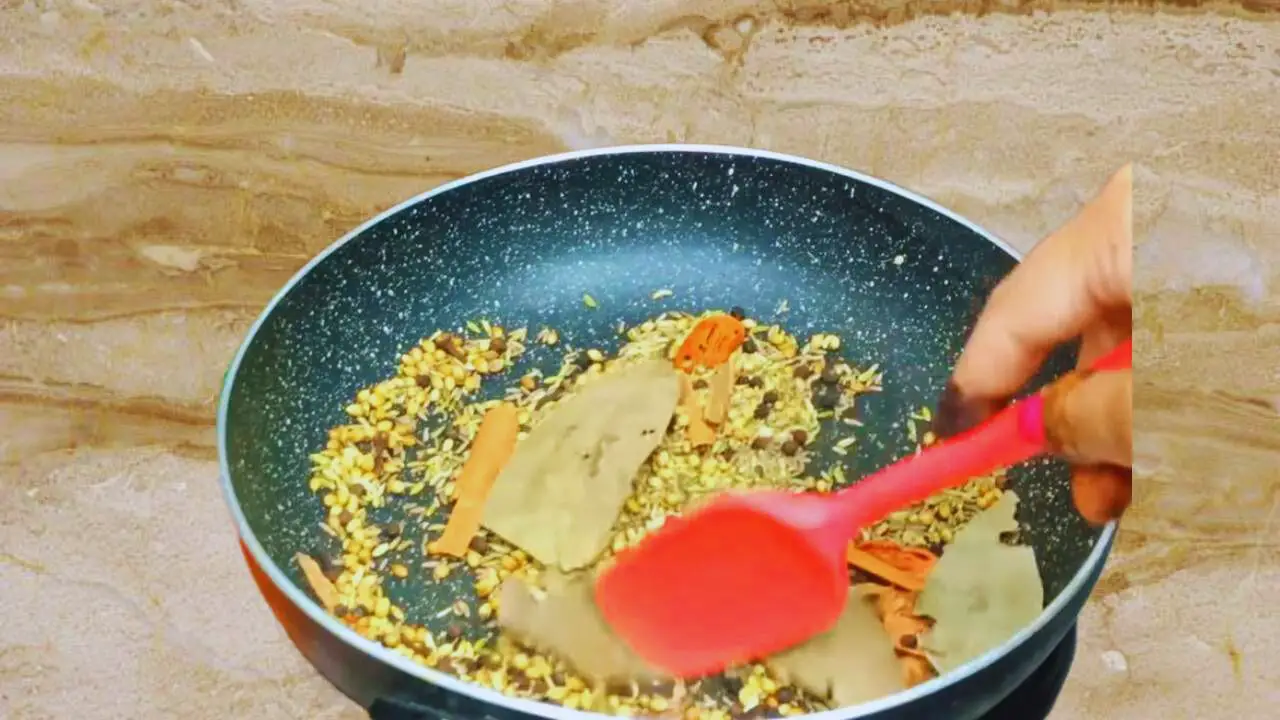
Step 15: When done, turn the flame of your gas stove off and let the pan sit for a while so that the spices cool off completely.
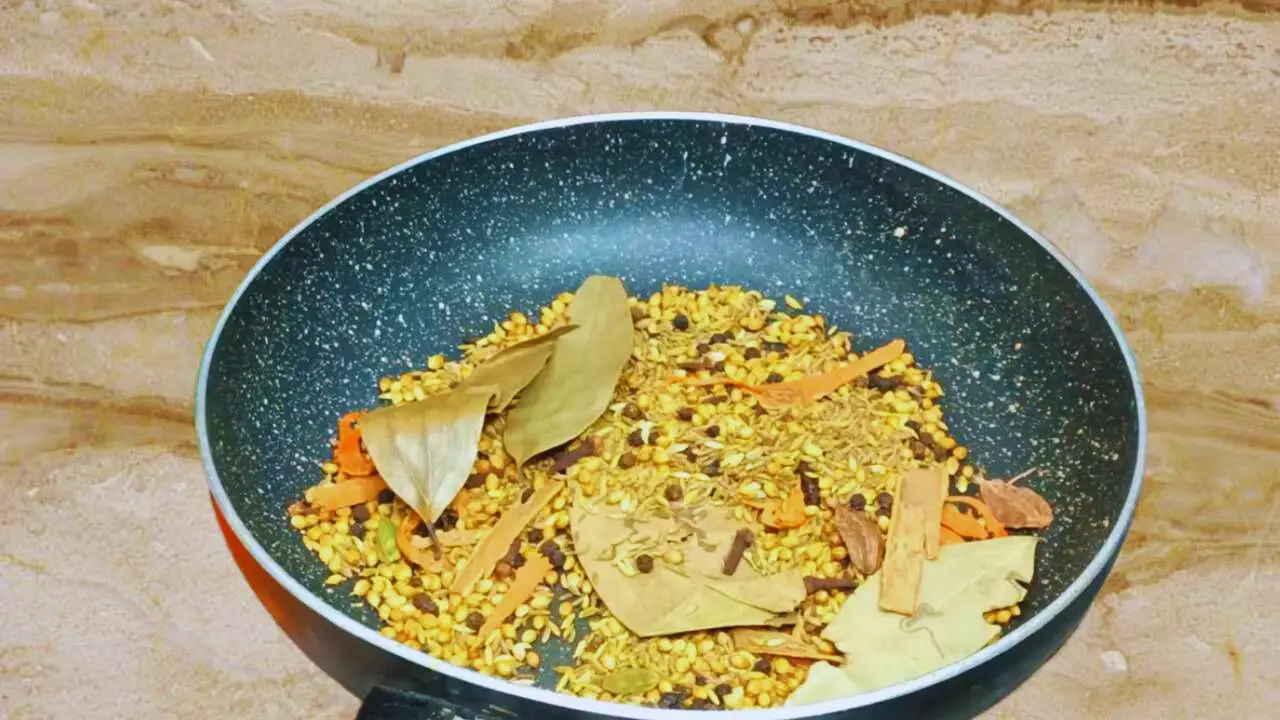
Step 16: Now, take a dry and clean grinder.
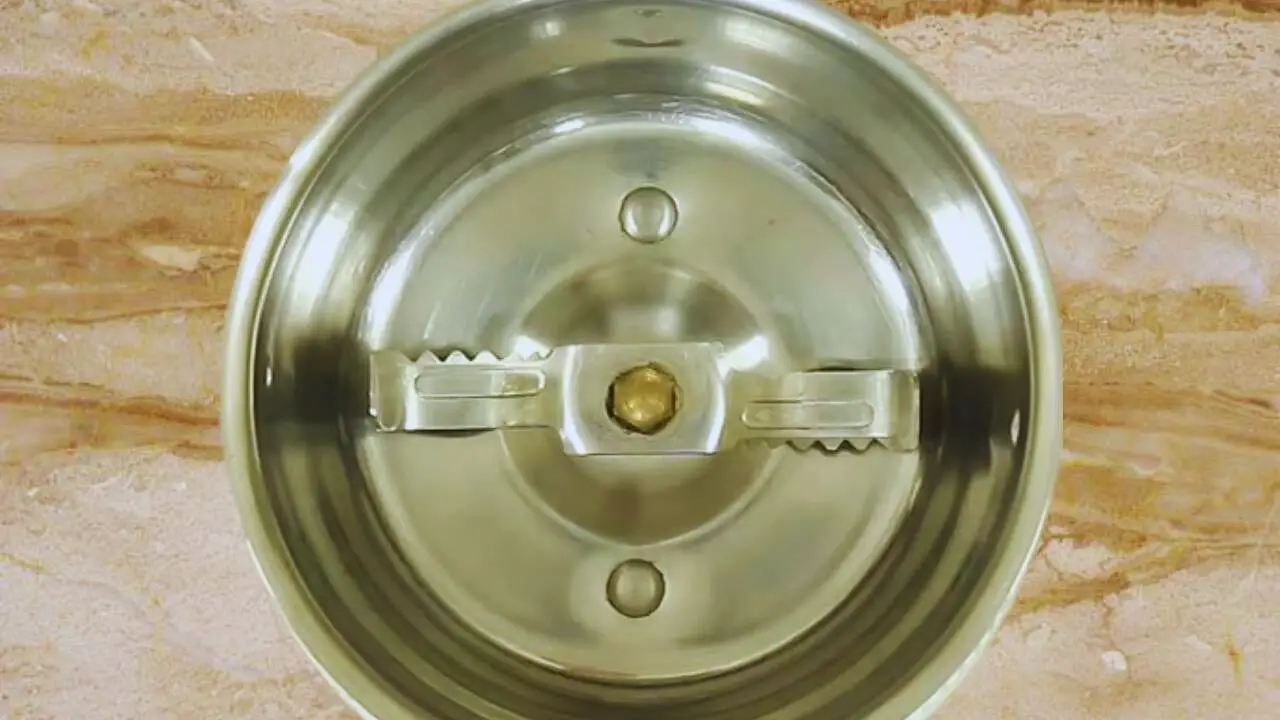
Step 17: Transfer the roasted spices from the frying pan to the grinder.
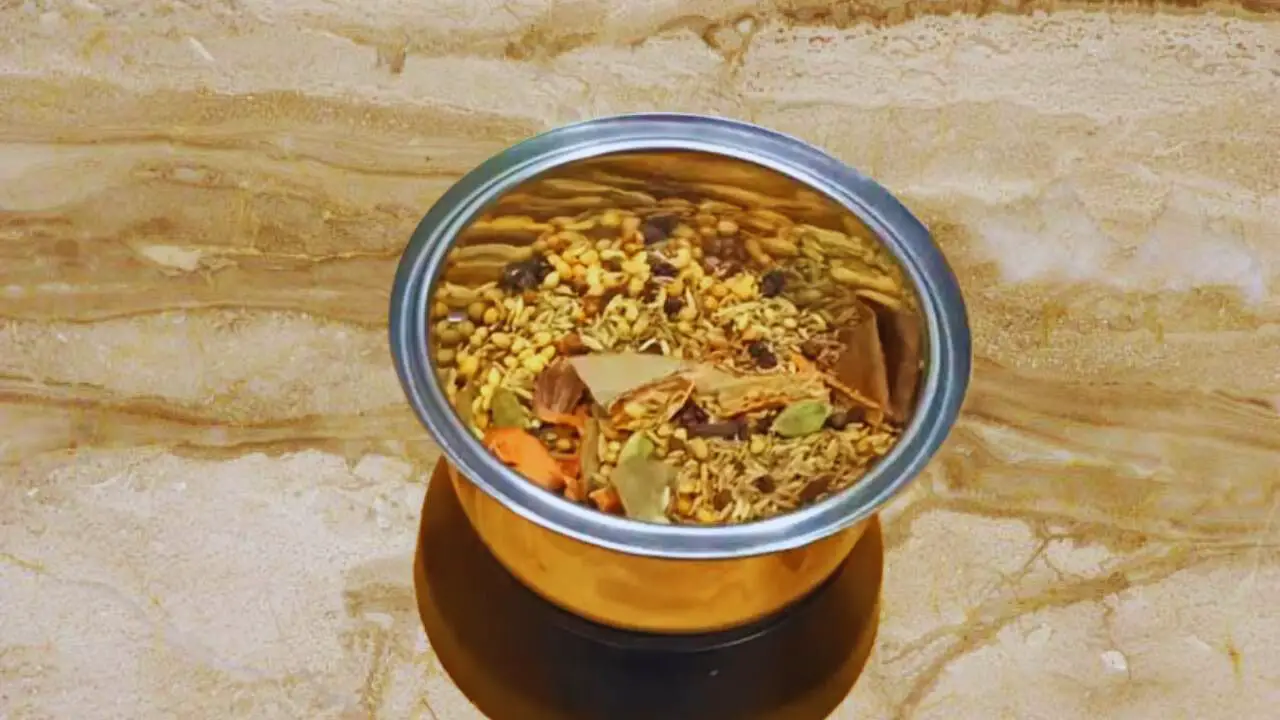
Step 18: Now, to the spices in the grinder add 2 tbsp of fresh cumin speed that you kept aside before.
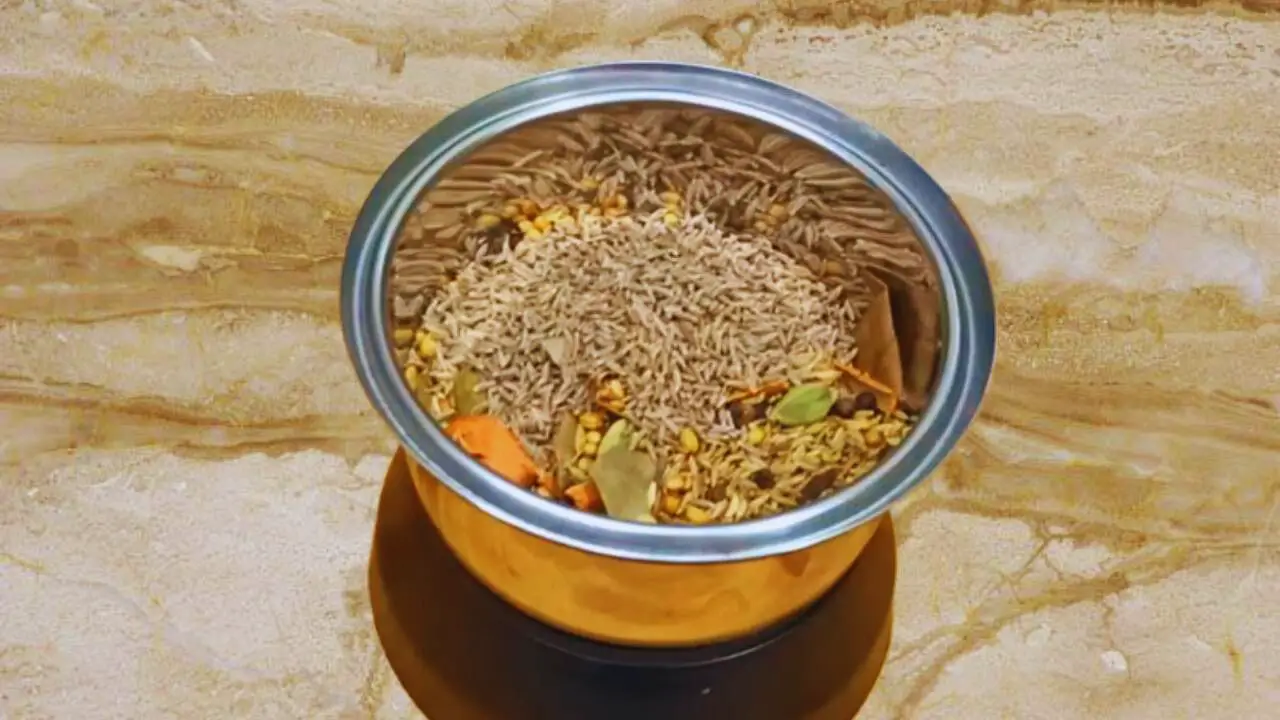
(Pro tip: This is my style. You may skip it if you want. However, this process will provide a distinct taste to the poha masala powder with the flavor of the roasted and fresh cumin seeds contributing to enhancing the taste and flavor individually).
Step 19: Finally, add ½ piece of nutmeg to the content in the grinder.
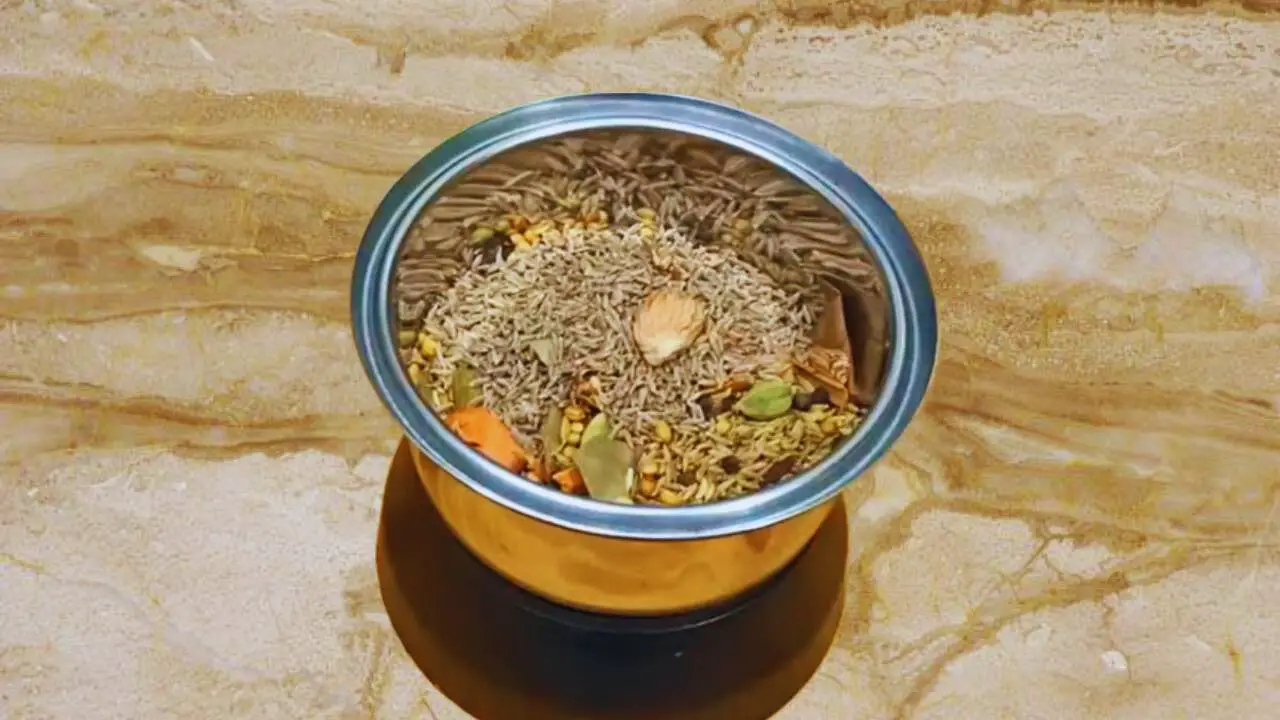
Step 20: Now, grind the spices to a fine powder.
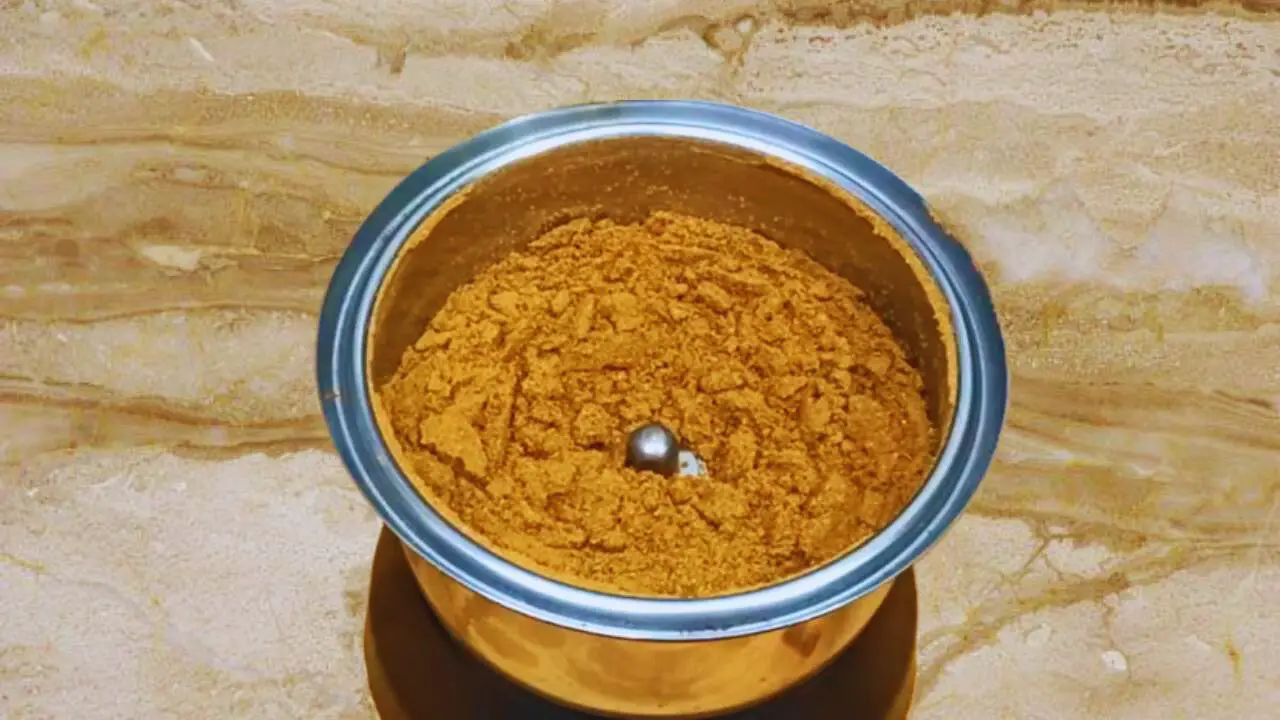
Step 21: Check the coarseness of the ground spices.
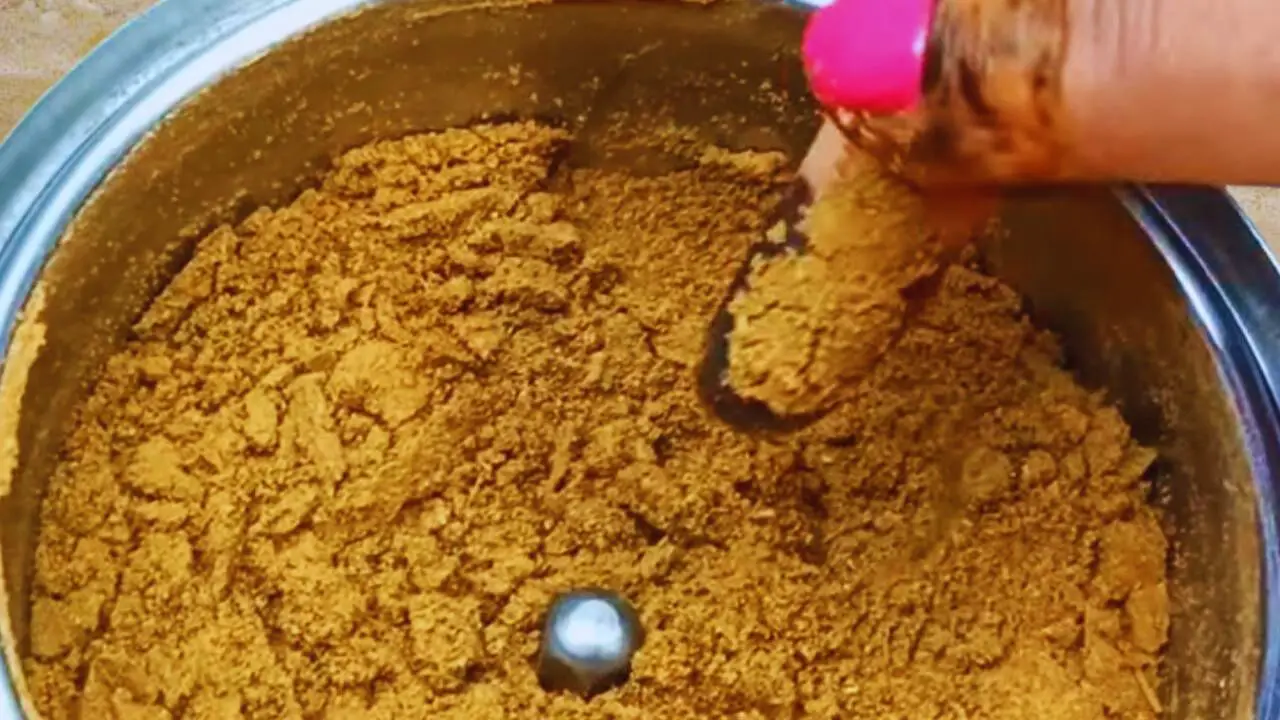
(Pro tip: It is good to have it a bit coarse at this point because you will need to grind it later on as well).
Step 22: Now, it is time to add some powdered ingredients to the ground spices in the grinder. Start with 2 tbsp of dry red chili powder.
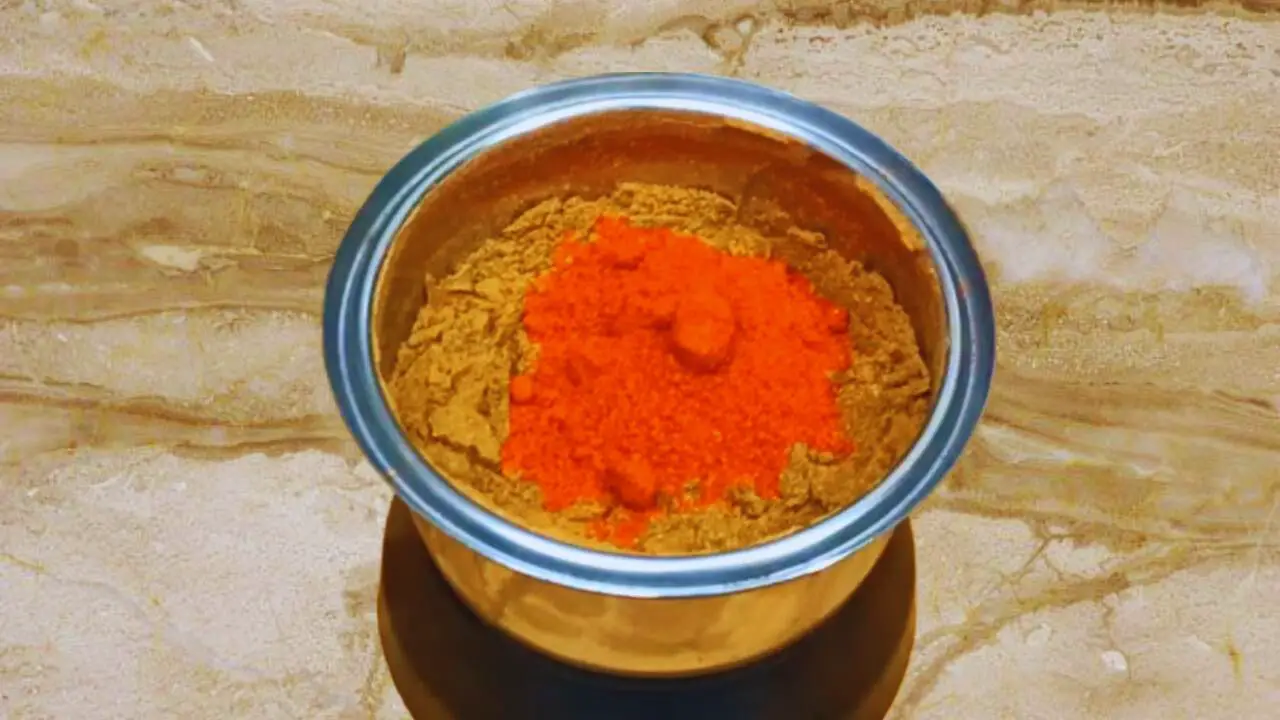
(Pro tip: You may add more or less quantity of dry red chili powder according to your preference for hotness in the masala powder).
Step 23: Follow it with ½ tsp of turmeric powder.
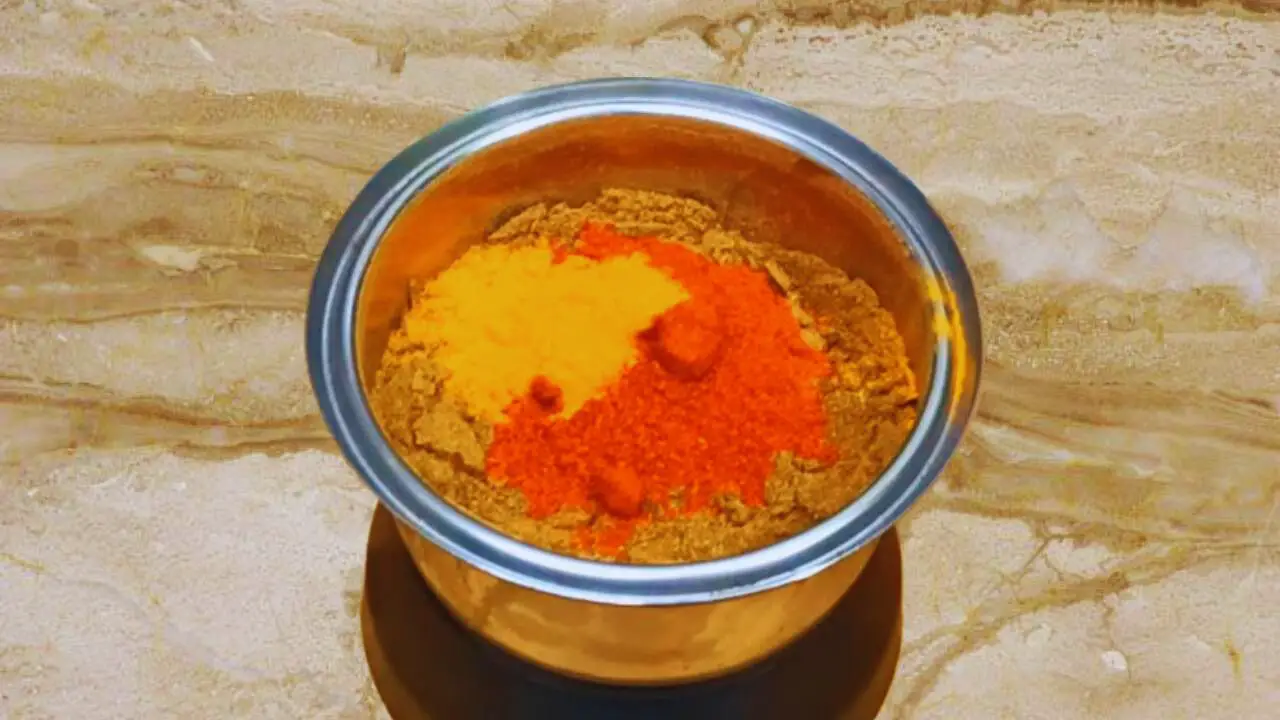
Step 24: Then add 1 tsp of normal table salt and 1 tsp of black salt to the content in the grinder.
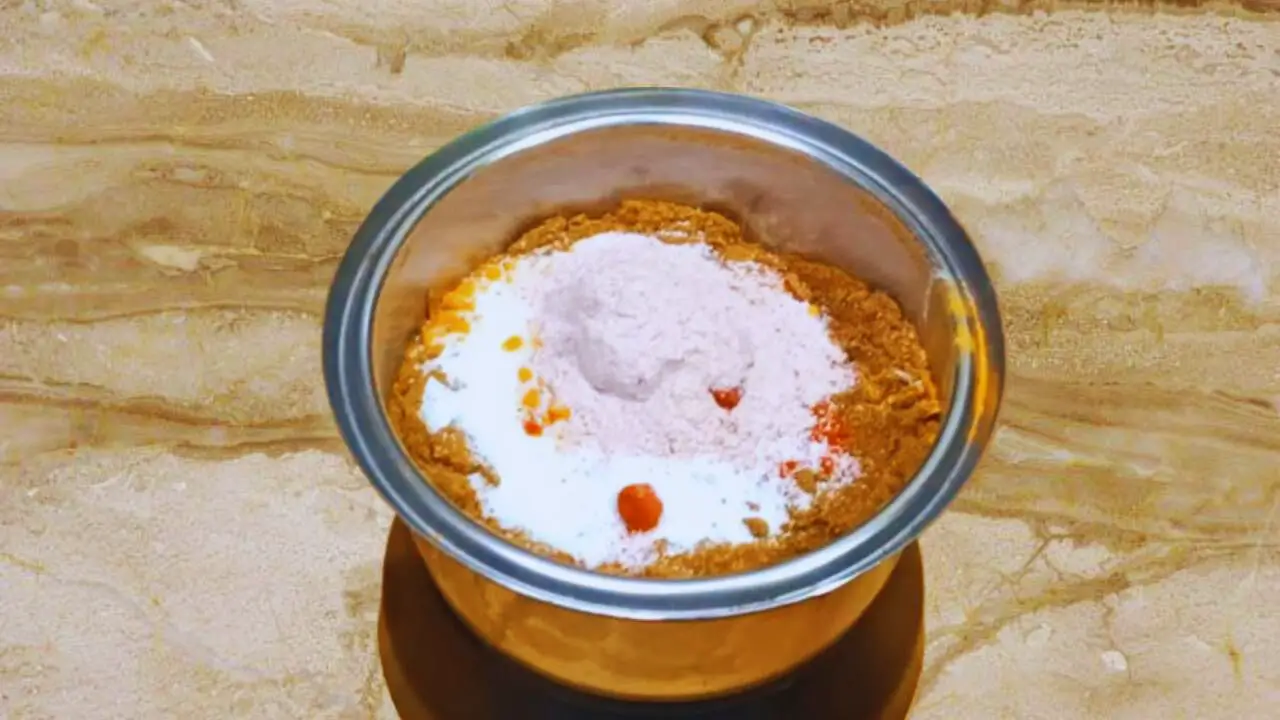
(Pro tip: The amount of normal salt and black salt should be ideally the same. This enhances the taste and flavor of the masala powder at the same time).
Step 25: Then add 2 tsp of dry mango (amchur) powder to the content in the grinder. Finally, add ½ tsp of dry ginger powder, and 1/8 tsp of asafetida or just a pinch of it.
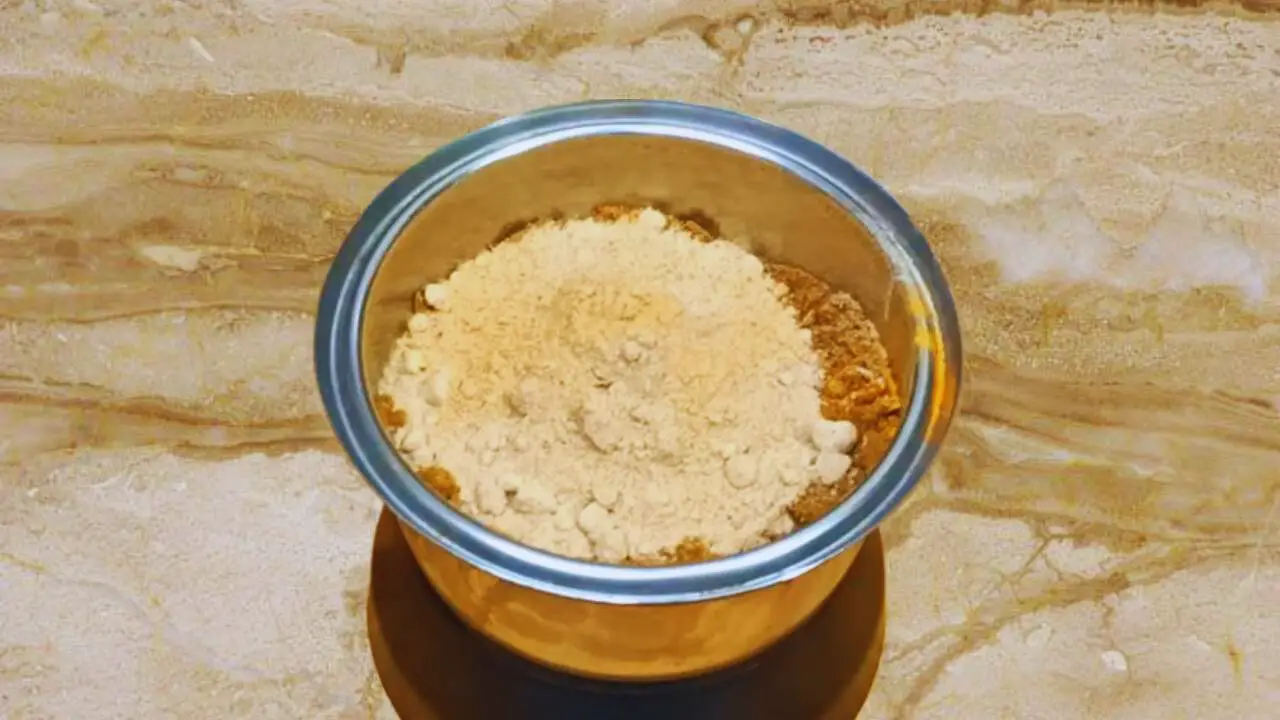
(Pro tip: Alter the amount of asafetida depending on the strength of it).
Step 26: Blend all of these powdered spices nicely.
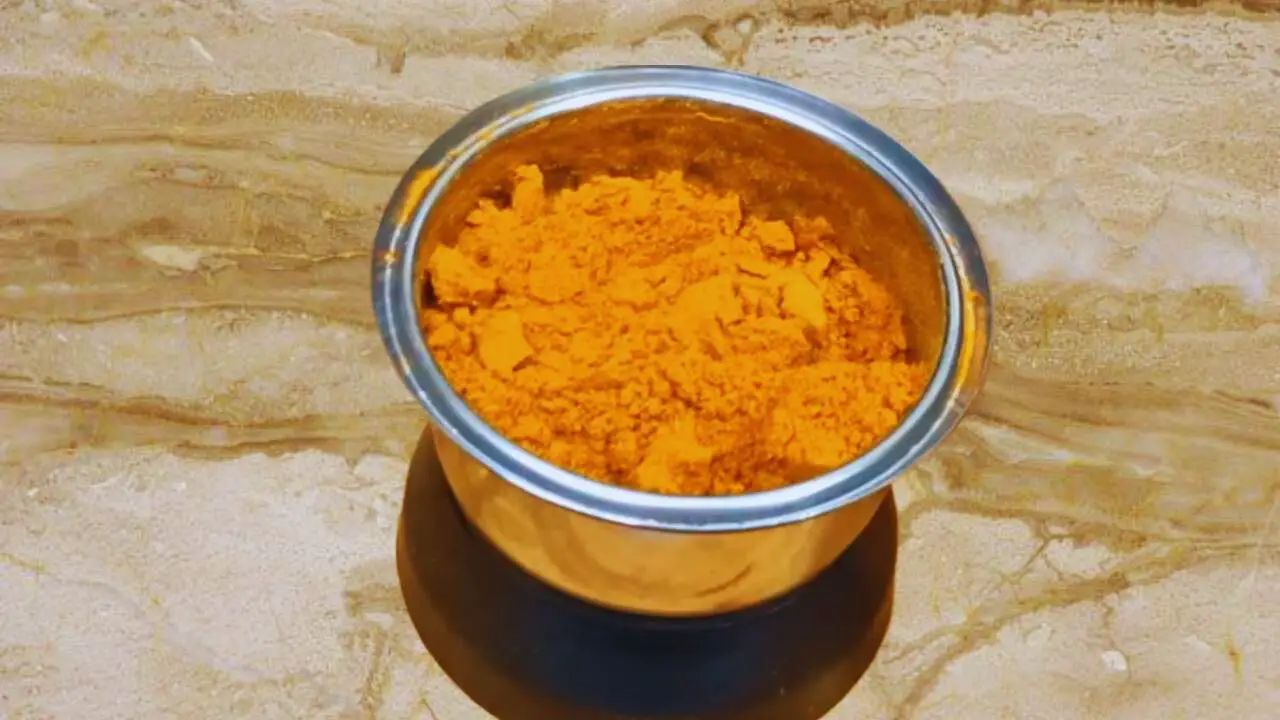
Step 27: Finally, mix them with a spoon to get the right color of the poha masala powder.
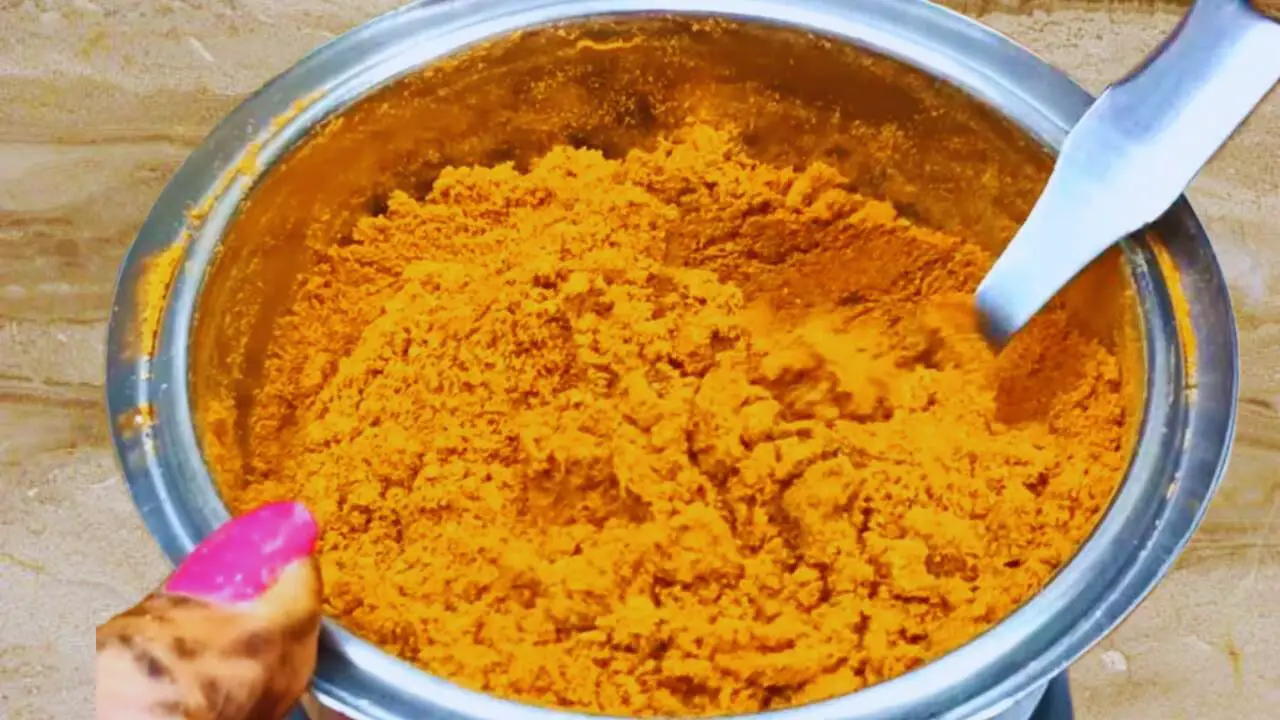
Step 28: Transfer the mixture to a plate. Your exquisite and exclusive poha masala powder is ready to be used.
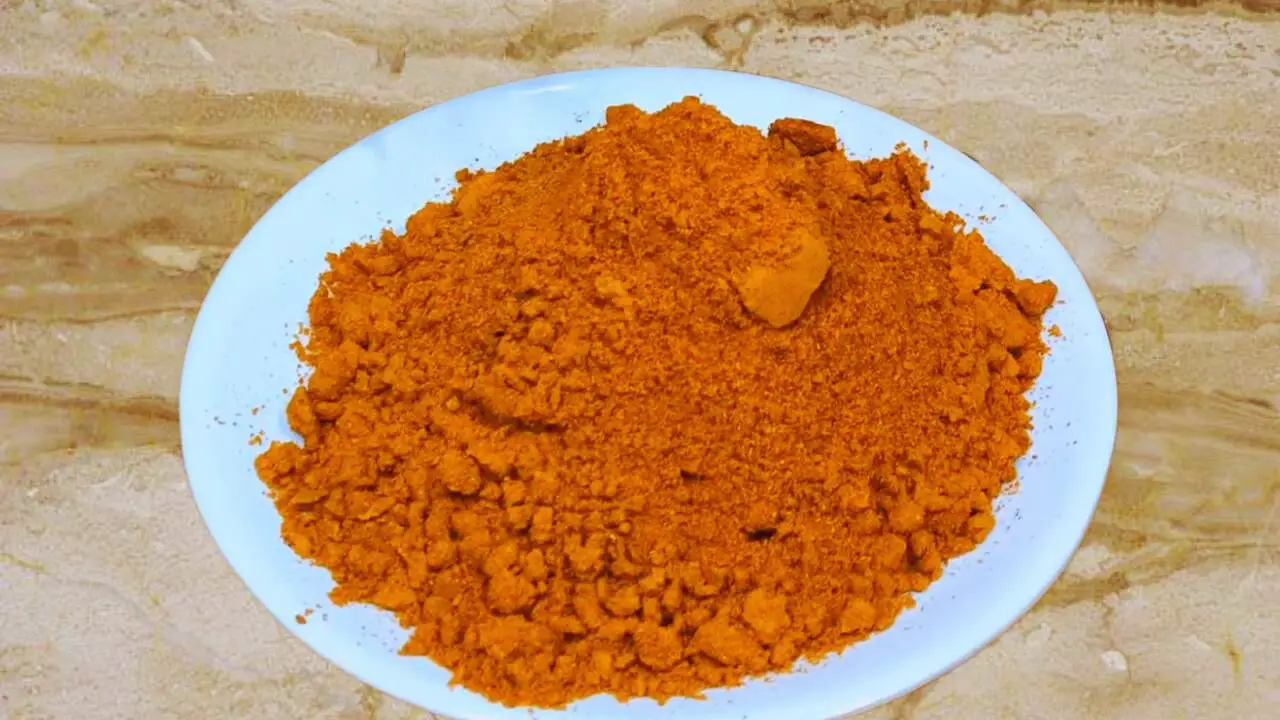
Recipe Card
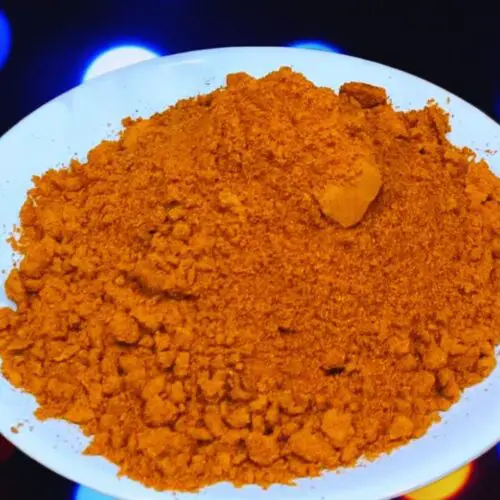
Poha Masala Powder
Ingredients
- 2 tbsp Cumin seeds
- 2 tbsp Coriander seeds
- 2 tbsp Fennel seeds
- 2 pieces Cinnamon sticks 1-inch size
- 15 pieces Cloves
- ½ tbsp Black pepper
- 1 piece Black cardamom
- 5 pieces Green cardamom
- 4 pieces Bay leaves medium
- 2 pieces Mace
- ½ piece Nutmeg
For Final Blending
- 2 tbsp Cumin seeds
- 2 tsp Red chili powder
- ½ tsp Turmeric powder
- 1 tsp Table salt
- 1 tsp Black salt
- 2 tsp Dry mango powder (amchur powder)
- ½ tsp Dry ginger powder
- ⅛ tsp Asafetida (a pinch)
Instructions
- Heat a frying pan on a low flame on your gas stove.
- Put 2 tbsp of fresh cumin seeds first in it.
- Along with it, add 2 tbsp of whole coriander seeds.
- Now, add 2 tbsp of fresh fennel seeds.
- Then, add 2 sticks of cinnamon of about 1-inch in size. You may break them into small pieces, though I have not.
- Stir the spices continuously to dry roast them on a low flame.
- Check the color of the spices. When it turns slightly golden brown, stop stirring.(Pro tip: Do not roast them much as that will affect the flavor. Just make sure that there is no moisture in them to enhance their shelf life).
- Now add about 15 pieces of cloves to the ingredients in the frying pan.
- Follow it with ½ tbsp of black pepper.
- Now add 1 piece of black cardamom to the spices in the pan.
- Then add 5 pieces of green cardamom.
- Follow it with 4 medium pieces of bay leaves. You may tear them in half.
- Then add 2 pieces of mace.
- Now, stir the contents continuously for about a couple of minutes until they are roasted nicely and you smell the aroma of roasted spices. Check the color.
- When done, turn the flame of your gas stove off and let the pan sit for a while so that the spices cool off completely.
- Now, take a dry and clean grinder.
- Transfer the roasted spices from the frying pan to the grinder.
- Now, to the spices in the grinder add 2 tbsp of fresh cumin speed that you kept aside before.(Pro tip: This is my style. You may skip it if you want. However, this process will provide a distinct taste to the poha masala powder with the flavor of the roasted and fresh cumin seeds contributing to enhancing the taste and flavor individually).
- Finally, add ½ piece of nutmeg to the content in the grinder.
- Now, grind the spices to a fine powder.
- Check the coarseness of the ground spices.(Pro tip: It is good to have it a bit coarse at this point because you will need to grind it later on as well).
- Now, it is time to add some powdered ingredients to the ground spices in the grinder. Start with 2 tbsp of dry red chili powder.(Pro tip: You may add more or less quantity of dry red chili powder according to your preference for hotness in the masala powder).
- Follow it with ½ tsp of turmeric powder.
- Then add 1 tsp of normal table salt and 1 tsp of black salt to the content in the grinder.
- (Pro tip: The amount of normal salt and black salt should be ideally the same. This enhances the taste and flavor of the masala powder at the same time).
- Then add 2 tsp of dry mango (amchur) powder to the content in the grinder. Finally, add ½ tsp of dry ginger powder, and 1/8 tsp of asafetida or just a pinch of it.(Pro tip: Alter the amount of asafetida depending on the strength of it).
- Blend all of these powdered spices nicely.
- Finally, mix them with a spoon to get the right color of the poha masala powder.
- Transfer the mixture to a plate. Your exquisite and exclusive poha masala powder is ready to be used.
Notes
- You can roast the whole spices together or separately if you have enough time, but ensure you roast them gently until they change their color slightly.
- My recipe allows experimenting with the combination of spices. So, feel free to alter the ratios of the ingredients.
- I would recommend adding the cumin seeds while grinding the spices. This will enhance the taste and flavor of the overall powder even further.
- I do the grinding in stages and urge you to do the same. Keep the texture relatively coarse initially as further blending will render the desired smooth texture.
- When you use the powder, ensure using a dry spoon and seal and replace the container immediately after use. This will prevent moisture introduction and condensation to affect the texture and potency of the powder.


